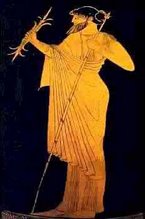
In this article we will talk about our coin's background or as an artist what I call negative space. There are a few simple color tips I will share with you and perhaps you will be somewhat enlightened and better able to create good negative space choices that will enhance your coin photos.
I am sure most know about warm and cool colors. Warm colors lie on the red and yellow side of the color spectrum. Conversely, we find cool colors on the blue and green side of the spectrum. I could expound on the statement I just made endlessly but that is not our objective. When photographing our coins we need know that our primary objective is to focus on the coin and our enabling objective is to present the coin in the most pleasing way we can. The coin is our central subject matter. The negative area should be highly secondary to presenting our coin in the best environment possible.
Warm colors advance and are very difficult to use effectively in a negative area. The warm colors distract from our coin, our central subject matter, so remember we are interested in the coin presentation and not a handsome negative area. Warm colors will almost always dominate our coin composition.
Cool colors recede and are the easiest to work with when presenting a coin. However, this depends on the value and intensity of the color I choose. Please observe the pics you see above and you will find that I purposefully included what I consider to be both good and bad color choices. Please understand that I am not saying a particular color is not "pretty." I am simply saying there is a consummate way in which we can best present our coin. We can use pretty colors in our landscape compositions, etc.
We will now move on to white and black. White is the presence of all colors and black is the absence of all colors. After spending a few years photographing coins I think I prefer white as opposed to black. The black and white thing is very personal and there is no right or wrong, simply a matter of preference.
I would like for you to perform the following exercise. Cut a square hole roughly the size of one of the coins you see posted above. Center the hole in a sheet of your copy paper. Now move the coin from pic to pic and concentrate on what you are seeing. Are you seeing the coin or are you looking at the negative area. Find the pic you like best. REMEMBER, we are interesting in diminishing the pictorial value of the negative area.
If the space in and around the coin is our negative area is negative space then what do I call the coin space? I call the coin the positive space. That is the object we want the viewer to see in and above all else. Once more, we are not speaking of pretty; we are speaking of effective coin presentation.
I hope this will help with your coin compositions and presentations. I am always ready and eager to help others when and if I can. Please feel free to ask whatever you like and I will try to help. One quick thing, never use texture in your negative space. Texture clutters and moves the eye away from the coin.. Merry Christmas and God Bless.. Jerry..

